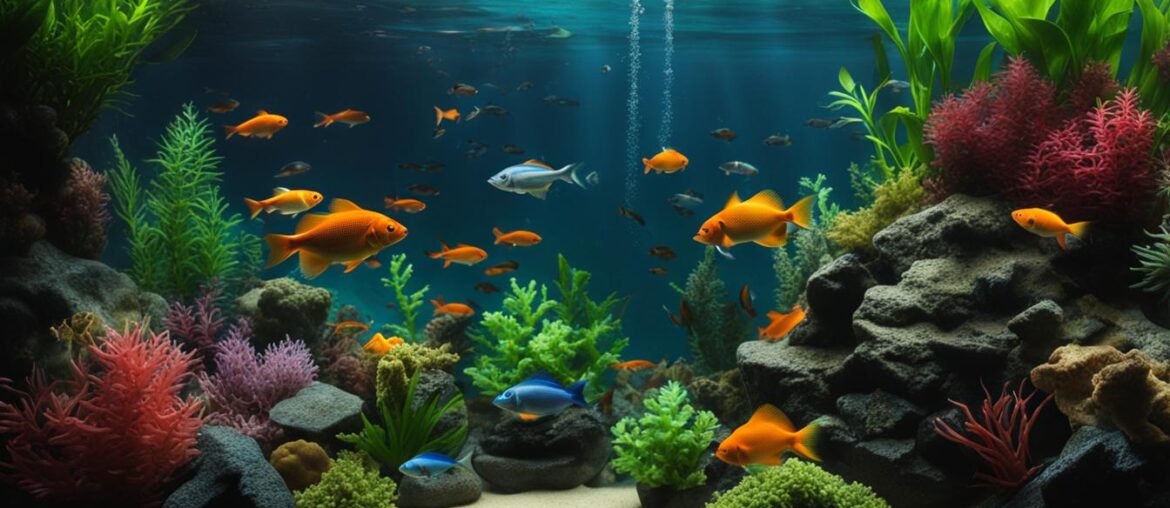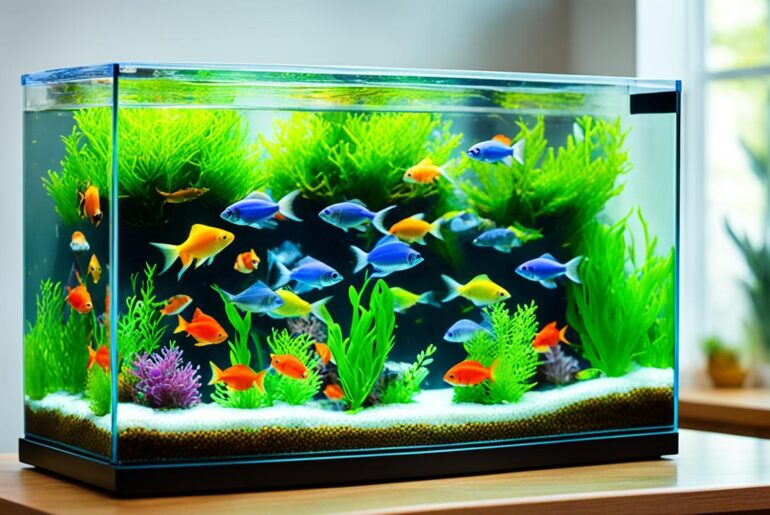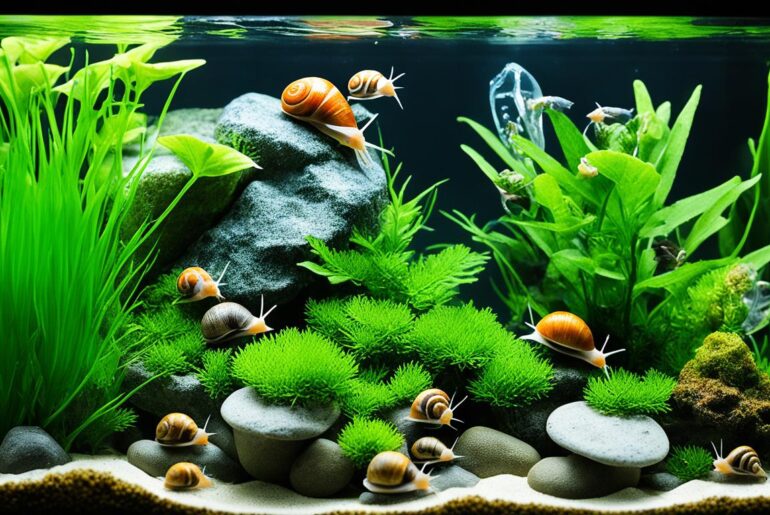As an avid aquarium enthusiast, I’ve experienced the incredible joy and beauty that comes with maintaining a freshwater aquarium. Watching the colorful fish gracefully swim among the vibrant aquatic plants brings a sense of tranquility and wonder to my day. But I’ve also learned that maintaining a healthy aquarium requires careful attention, especially when it comes to seasonal care.
Seasonal care is not just about changing the decorations in your tank to match the holidays or adjusting the lighting for a cozy ambiance. It’s about understanding the impact of changing seasons on your aquatic ecosystem and taking the necessary steps to ensure the well-being of your fish, plants, and overall aquarium health.
Through years of trial and error, I’ve gathered valuable insights and learned essential tips that have helped me create a thriving freshwater aquarium all year round. In this article, I want to share those tips with you, so you too can provide the best care for your aquatic friends.
Key Takeaways:
- Understanding the impact of seasonal changes on your freshwater aquarium is crucial for successful care.
- Regular water changes, adjusting lighting and temperature, and monitoring nutrient levels are vital for maintaining a healthy aquarium.
- Winter care involves keeping the water temperature stable and adjusting feeding schedules.
- Summer maintenance requires managing heat, providing shade, and keeping algae growth in check.
- Autumn care focuses on maintaining stable parameters, managing excess debris, and performing necessary equipment maintenance.
Understanding Seasonal Changes in Aquarium Maintenance
Different seasons bring unique challenges when it comes to maintaining a freshwater aquarium. It’s important to understand how seasonal changes can affect water parameters, plant growth, and fish behavior. By adapting your maintenance routine accordingly, you can ensure the health and well-being of your aquatic ecosystem.
The Impact of Seasonal Changes
With each new season, various factors come into play that can influence the overall condition of your aquarium. Changes in temperature, lighting, and nutrient availability can have a profound effect on the delicate balance within the tank.
“The key to successful aquarium maintenance lies in anticipating the impact of seasonal changes and taking proactive steps to mitigate any potential issues.”
Seasonal Freshwater Aquarium Tips
Here are some essential tips to keep in mind when maintaining your freshwater aquarium throughout the year:
- Regular water changes: Schedule regular water changes to remove accumulated waste and maintain optimal water quality. This helps prevent the buildup of harmful substances and keeps your fish healthy.
- Adjusting lighting and temperature: Depending on the season, you may need to modify lighting intensity and duration to replicate natural daylight changes. Similarly, adjusting the aquarium’s temperature can help mimic seasonal variations.
- Monitoring nutrient levels: As seasonal changes impact plant growth and nutrient uptake, it’s crucial to monitor and maintain appropriate nutrient levels. This involves testing water parameters and adjusting fertilization accordingly.
Stay Informed, Provide Care
Understanding the impact of seasonal changes on your freshwater aquarium allows you to provide the necessary care and adjustments for your aquatic friends. By following these seasonal freshwater aquarium tips, you can promote a thriving ecosystem and enjoy the beauty of your aquarium all year round.
| Season | Challenges | Care Guidelines |
|---|---|---|
| Spring | Increased plant growth and algae bloom | Thorough cleaning and monitoring nutrient levels |
| Summer | High temperatures and increased algae growth | Managing heat, providing shade, and increasing water changes |
| Autumn | Decreased daylight and falling leaves | Maintaining stable water parameters and managing excess debris |
| Winter | Cold temperatures and decreased fish activity | Keeping water temperature stable and adjusting feeding schedules |
Winter Care Tips for Freshwater Aquariums
Cold winter temperatures can have a significant impact on your freshwater aquarium. It’s essential to take extra precautions during this season to ensure the well-being of your aquatic friends. Here are some winter care tips to help you maintain a healthy and thriving aquarium:
- Monitor and control water temperature: As the temperature drops, it’s crucial to keep a close eye on the water temperature in your aquarium. Use a reliable aquarium heater to maintain a stable temperature suitable for your fish species. Avoid drastic temperature fluctuations, as they can stress and harm your fish.
- Provide adequate heating: In addition to monitoring the water temperature, consider providing extra heating in the room where your aquarium is located. Cold drafts and low room temperatures can negatively affect your aquarium’s temperature stability.
- Adjust feeding schedules: During the winter months, fish metabolism slows down, and they require less food. Adjust your feeding schedule accordingly, and be mindful of overfeeding, as uneaten food can quickly degrade water quality and lead to bacterial blooms.
- Monitor water quality closely: Winter weather can make it challenging to maintain optimal water quality in your aquarium. Perform regular water tests and check for any signs of ammonia, nitrite, or nitrate imbalance. Consider increasing the frequency of water changes to ensure a healthy and stable environment for your fish.
“Cold winter temperatures can have a significant impact on your freshwater aquarium.”
Proper winter care is crucial in preserving the health and well-being of your freshwater aquarium. By implementing these tips, you can help your fish and plants thrive throughout the winter season.
Check out this helpful table for a quick overview of winter care tips:
| Winter Care Tips | Description |
|---|---|
| Monitor and control water temperature | Use a reliable heater to maintain stable temperatures suitable for your fish. |
| Provide adequate heating | Ensure the room temperature around the aquarium is favorable for your aquatic friends. |
| Adjust feeding schedules | Take into account the slowed metabolism of fish and feed them accordingly. |
| Monitor water quality closely | Perform regular water tests and increase water changes as necessary. |
Keep Your Aquarium Warm and Cozy This Winter
With these winter care tips and careful attention to your aquarium’s needs, you can ensure a safe and comfortable environment for your underwater inhabitants. Remember, a little extra care during the cold months can go a long way in maintaining the health and beauty of your freshwater aquarium!
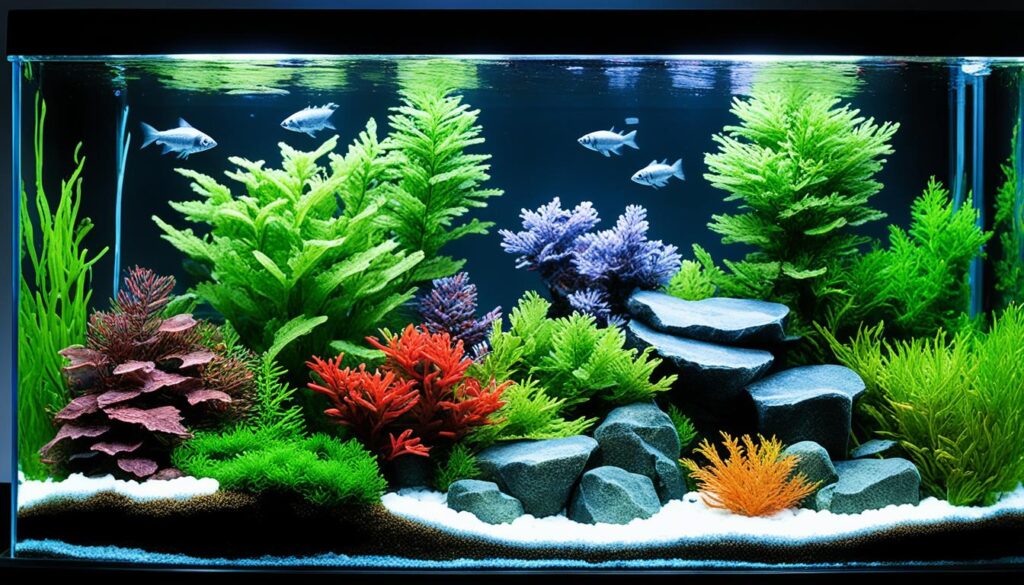
Summer Maintenance for Freshwater Aquariums
During the summer months, maintaining a healthy freshwater aquarium can be challenging due to high temperatures and increased algae growth. To ensure the well-being of your aquatic habitat, it is crucial to implement effective summer fish tank maintenance strategies. Let’s explore some seasonal freshwater aquarium tips to keep your aquarium thriving during the summer.
Managing Heat and Providing Shade
As temperatures rise, it is essential to regulate the heat in your aquarium to prevent any adverse effects on your fish and plants. Consider adjusting the location of your aquarium away from direct sunlight or using a cooling fan or chiller to maintain the ideal temperature range. Providing sufficient shade, such as using aquatic plants or adding a canopy, can help reduce the impact of the summer sun.
Monitoring Water Parameters
Higher temperatures can lead to changes in water parameters, which can impact the overall health of your aquarium inhabitants. Regularly test the water quality, paying close attention to pH levels, ammonia, nitrite, and nitrate. Monitoring these parameters will help you take necessary actions to restore optimal conditions.
Adjusting Lighting Schedule
Increased daylight during the summer may necessitate adjustments to your aquarium lighting schedule. Consider reducing the duration of artificial lighting to combat excess heat and prevent excessive algae growth. It is crucial to strike a balance that meets the lighting needs of your aquatic plants and your fish.
Increasing Water Changes
With elevated temperatures, algae growth can become more prevalent. Performing regular water changes is an effective way to mitigate algae and maintain water clarity. Increase the frequency of water changes during the summer season and ensure that you use a high-quality water conditioner to maintain the necessary balance of essential minerals.
Autumn Care for Freshwater Aquariums
As the leaves start to fall and the seasons transition, it’s time to give your freshwater aquarium some special attention. Autumn maintenance plays a crucial role in ensuring the well-being of your fish and plants. With a focus on maintaining stable water parameters, managing excess debris, and preparing for changes in lighting and temperature, you can create a thriving environment for your aquatic friends.
One important aspect of autumn aquarium care is to monitor and maintain stable water parameters. As the temperature begins to drop outside, it’s essential to ensure that the water temperature in your tank remains consistent. Sudden temperature fluctuations can stress your fish and negatively impact their health. Regularly check and adjust your heater as needed to maintain the optimal temperature for your fish species.
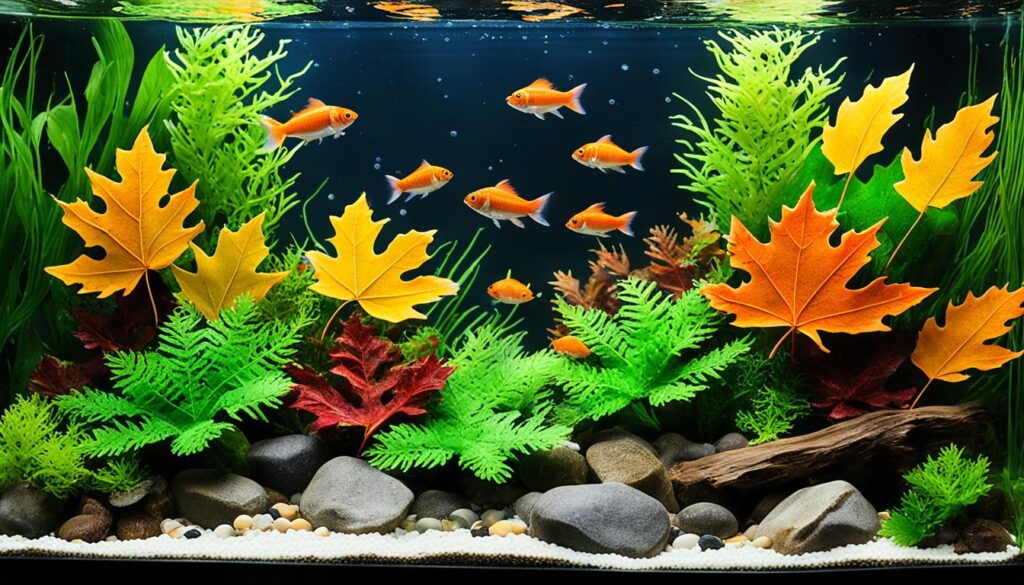
Another aspect of autumn care is managing excess debris in your tank. Falling leaves, twigs, and other debris can accumulate and cause water quality issues if left unchecked. Take the time to remove any visible debris from your tank and perform regular water changes to maintain optimal water quality. Consider using a fine-mesh net to skim the water’s surface and remove any floating debris effectively.
Preparing for changes in lighting and temperature is also critical during the autumn season. As the days become shorter, natural sunlight may decrease, potentially impacting your aquarium’s lighting needs. Adjust the duration and intensity of your aquarium lights accordingly to mimic the changing natural light conditions. Additionally, consider the impact of colder weather on the ambient temperature around your tank and make any necessary adjustments to maintain a stable and comfortable environment for your fish.
Autumn is also an excellent time to assess and perform necessary maintenance tasks on your aquarium equipment. Check the functionality of your filters, heaters, and other devices, ensuring they are running optimally. Perform any required cleaning or replacement of worn-out parts. By keeping your equipment in good condition, you can ensure its efficacy in maintaining a healthy aquarium environment.
In summary, autumn care for freshwater aquariums involves maintaining stable water parameters, managing excess debris, preparing for changes in lighting and temperature, and conducting equipment maintenance. By dedicating time and effort to these essential tasks, you can create a stable and vibrant environment for your aquatic pets to thrive in throughout the autumn season.
Spring Tips for Freshwater Aquariums
Spring is a time of renewal, and what better way to bring that fresh and vibrant energy into your home than through your aquarium? As the seasons change, it’s important to adapt your care routine to ensure the health and vitality of your aquatic friends. Here are some spring tips for freshwater aquariums to help you set the stage for a thriving ecosystem:
Cleaning and Refreshing
Start the season off right by giving your aquarium a thorough cleaning and refreshing. Remove any debris, scrub away algae, and clean the glass to allow maximum visibility. Remember to use gentle aquarium-safe cleaners to avoid harmful chemicals. This will not only improve the aesthetic appeal of your tank but also promote better water quality.
Water Parameters Check
After a long winter, it’s crucial to assess and adjust your water parameters to ensure a healthy environment for your fish and plants. Test the pH, ammonia, nitrite, and nitrate levels in your tank using reliable aquarium test kits. Make any necessary corrections by performing partial water changes and adding pH buffers or water conditioners.
Filtration Media Maintenance
As winter passes, your filtration media might be due for a clean or replacement. Check your filter cartridges, sponges, or bio-media for clogging or signs of wear. If needed, clean or replace these components to keep your filtration system running efficiently, ensuring optimal water quality and reducing the risk of toxins accumulating in your aquarium.
Trimming Overgrown Plants
Springtime often brings rapid plant growth in freshwater aquariums. Take the time to trim and shape any overgrown plants to maintain the aesthetic appeal and prevent them from overshadowing other plants or obstructing the swimming space for your fish. Pruning will also promote healthy growth and prevent nutrient imbalances in the water.
Introducing New Fish and Live Plants
Spring is the perfect season to introduce new fish or add live plants to your aquarium. Research and select fish species that are compatible with your existing inventory in terms of behavior, water conditions, and size. When adding live plants, choose species that are suitable for your tank setup and provide benefits such as oxygen production and nutrient absorption.
By following these spring tips for freshwater aquariums, you can create a rejuvenating environment that mirrors the beauty and energy of the season. Take the time to refresh your aquarium, check water parameters, maintain filtration media, trim plants, and introduce new additions. Your aquatic friends will thank you for the renewed care and thrive in their revitalized habitat.
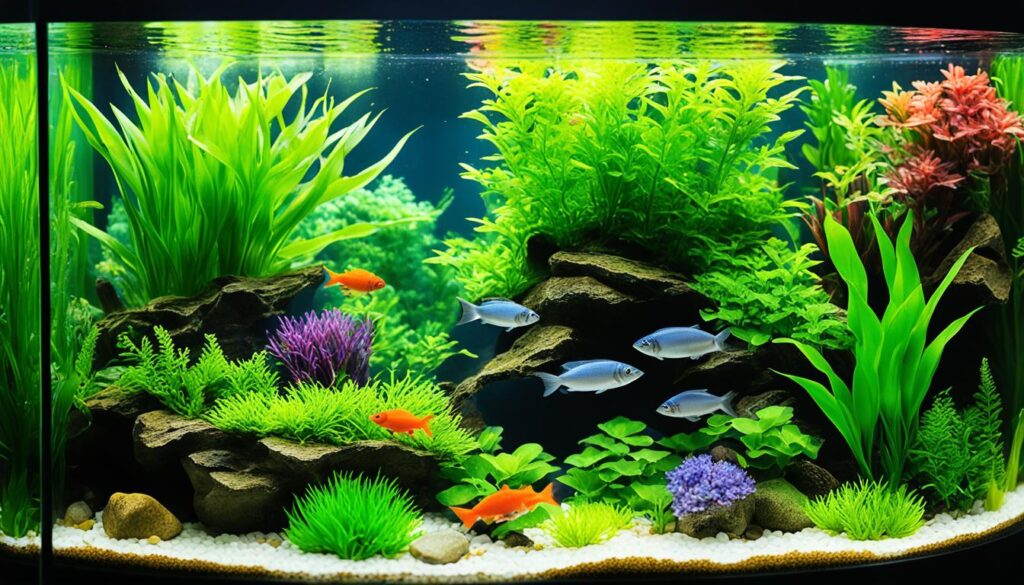
| Tips for Spring Care in Freshwater Aquariums |
|---|
| Clean and refresh your aquarium |
| Check and adjust water parameters |
| Maintain or replace filtration media |
| Trim overgrown plants |
| Introduce new fish and live plants |
Proper Lighting and Temperature for Seasonal Care
When it comes to maintaining a healthy freshwater aquarium, proper lighting and temperature control play a vital role. Different seasons bring changes in lighting intensity and duration, as well as temperature requirements for your fish and plants. Understanding and meeting these specific needs will help create an optimal environment for your aquatic friends.
Let’s start by discussing the importance of aquarium lighting. Light is essential for photosynthesis in plants, which produce oxygen and absorb harmful gases in the aquarium. The right amount and quality of light help promote plant growth and provide a natural habitat for your fish. It’s crucial to adjust your lighting setup based on the season’s natural light availability and consider the light requirements of your specific fish and plant species.
“Proper lighting ensures that your plants receive the necessary amount of light energy to carry out photosynthesis efficiently.”
In addition to lighting, temperature control is equally important for the well-being of your aquarium inhabitants. Different fish species have different temperature requirements, and providing the right temperature stability is crucial for their health and overall well-being. Seasonal variations can cause fluctuations in temperature, which may have adverse effects on your fish. Regular monitoring and adjustment of the heater or chiller will help maintain the desired temperature range.
Remember, fish and plants have different lighting and temperature needs, so it’s essential to strike a balance in your aquarium’s environment. Research the specific requirements of your freshwater species to ensure their optimal health and vitality.
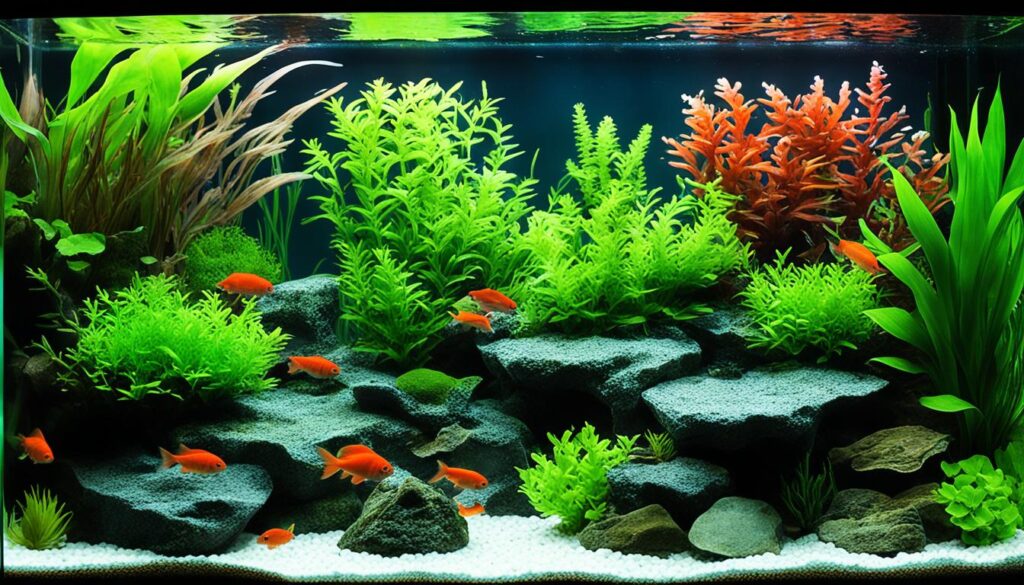
Comparison of Lighting and Temperature Needs by Season
| Season | Lighting Requirements | Temperature Range |
|---|---|---|
| Winter | Lower intensity and shorter duration | Species-dependent, usually cooler |
| Spring | Increasing intensity and duration | Species-dependent, gradual increase |
| Summer | Full spectrum and longer duration | Species-dependent, optimal range |
| Autumn | Gradual decrease in intensity and duration | Species-dependent, gradual decrease |
By understanding and fulfilling the specific lighting and temperature needs of your fish and plants, you can create a thriving and healthy freshwater aquarium all year round.
Water Parameters and Nutrient Management
Maintaining proper water parameters and nutrient levels is essential for the long-term health and success of your freshwater aquarium. Regular testing, water changes, and proper nutrient management are key to preventing issues such as algae blooms and poor fish health. Understanding the specific needs of your fish and plants will guide you in maintaining the ideal water quality.
Water Parameters
The first step in managing your aquarium’s water parameters is regular testing. Monitoring parameters such as pH, ammonia, nitrite, nitrate, and temperature is crucial for maintaining a stable and healthy environment for your fish and plants. Testing kits are readily available and easy to use, allowing you to ensure that the water conditions remain within the optimal range.
When it comes to specific water parameters, different fish and plants have different preferences. For example, some species thrive in slightly acidic water, while others prefer alkaline conditions. Research the specific needs of your aquatic inhabitants and adjust the water parameters accordingly.
It’s important to note that sudden or drastic changes in water parameters can be harmful to your aquarium’s inhabitants. When adjusting parameters, do so gradually over time to allow the fish and plants to acclimate to the new conditions. This gradual approach will minimize stress and ensure the well-being of your aquarium’s occupants.
| Water Parameter | Ideal Range |
|---|---|
| pH | 6.5-7.5 (slightly acidic to slightly alkaline) |
| Ammonia | 0 ppm |
| Nitrite | 0 ppm |
| Nitrate | 10-20 ppm |
| Temperature | Varies depending on species |
Nutrient Balance
In addition to water parameters, maintaining a proper nutrient balance is crucial for the health of your aquarium. Nutrients such as nitrogen and phosphorus are essential for plant growth, but an excess can lead to algae overgrowth and other water quality issues.
Regular water changes are an effective way to manage nutrient levels in your aquarium. By removing a portion of the water and replacing it with fresh, dechlorinated water, you can dilute the excess nutrients and maintain a healthy balance. Aim for a water change of around 10-20% every week or two, depending on your aquarium’s specific needs.
In addition to water changes, proper nutrient management includes controlling the amount and type of food given to your fish. Overfeeding can lead to an accumulation of excess nutrients in the water. Feed your fish a balanced diet and only provide as much food as they can consume within a few minutes.
Lastly, consider incorporating live plants into your aquarium. Plants can help absorb excess nutrients, improving water quality and reducing the risk of algae blooms. Additionally, plants provide a natural habitat for fish and offer added aesthetic appeal to your aquarium.
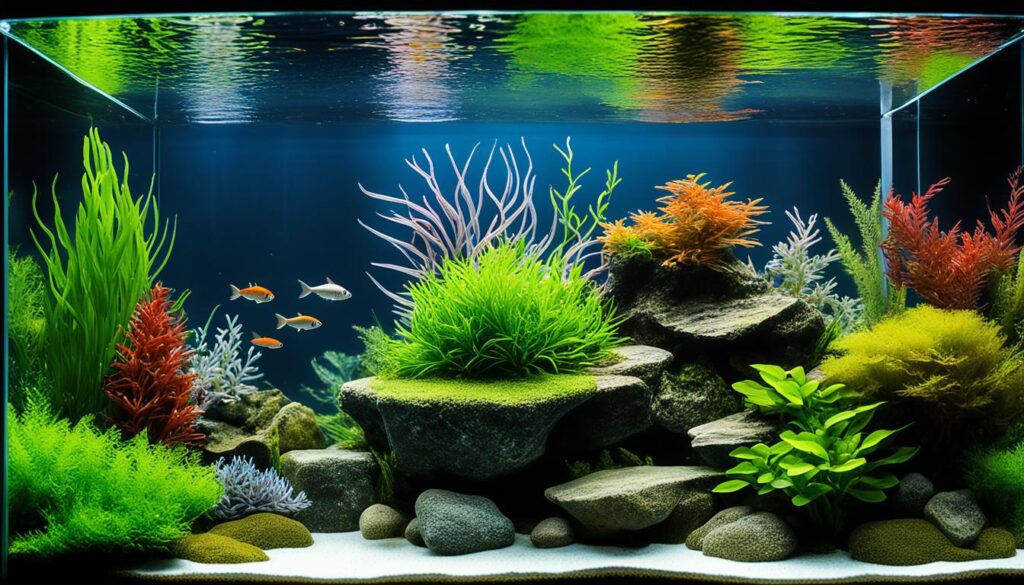
By maintaining proper water parameters and nutrient balance in your freshwater aquarium, you can create a thriving and healthy environment for your fish and plants. Regular testing, gradual adjustments, and careful nutrient management will ensure the long-term success of your aquatic ecosystem.
Fish Feeding and Seasonal Adjustments
Feeding your fish properly is essential for their overall health and well-being. However, it’s important to make seasonal adjustments to their feeding routines to ensure they receive the right amount and type of food.
In winter, fish metabolism slows down, and they may require less food. The cold temperatures can affect their digestion, so it’s important not to overfeed them. Feeding your fish smaller portions a few times a day is recommended. This allows them to digest the food more easily and prevents any excess waste from accumulating in the tank.
During spring and summer, fish become more active and may have increased appetites. They may require more food to fuel their higher activity levels. It’s important to monitor their behavior and adjust their feeding accordingly. Consider feeding them more often and increasing the portion sizes to meet their energy needs.
Understanding the seasonal feeding patterns of your fish species is key to providing proper nutrition. Some fish have specific dietary requirements or feeding preferences. Research the dietary needs of your fish and provide them with a balanced diet that includes a variety of foods, such as flakes, pellets, live or frozen foods.

Remember to monitor your fish’s health and adjust their feeding routine as needed. Overfeeding can lead to poor water quality and health issues, while underfeeding can result in malnutrition. Finding the right balance is crucial for their well-being.
Proper feeding is an essential part of seasonal fish care. Adjusting their feeding routine based on the season and their activity levels will help keep your fish healthy and thriving.
Equipment Maintenance and Upgrades
Regular maintenance and occasional upgrades of your aquarium equipment are essential for the long-term health and efficiency of your freshwater aquarium.
When it comes to equipment maintenance, cleaning filters, checking pumps and heaters, and replacing worn-out equipment should be on your to-do list. Regularly cleaning filters helps ensure proper water circulation and filtration, while checking pumps and heaters helps prevent malfunctions that could harm your fish. And if your equipment is showing signs of wear and tear, replacing it will help maintain the optimal performance of your aquarium.
But equipment maintenance isn’t just about keeping things in working order. Upgrading your aquarium equipment can also bring significant benefits. New technologies and advanced features can improve the overall functionality and aesthetics of your aquarium, enhancing your fish’s living environment and your viewing pleasure.
Upgrading to more advanced technologies can improve the overall functionality and aesthetics of your aquarium.
Whether you’re replacing equipment or considering an upgrade, it’s essential to choose high-quality products from reputable brands. Investing in reliable and durable equipment will save you time, money, and headaches in the long run.
| Equipment | Recommended Maintenance |
|---|---|
| Filtration System | Regularly clean filters and replace filter media as needed |
| Pumps and Heaters | Check for proper functioning and replace if necessary |
| Lighting | Replace bulbs regularly and adjust lighting schedule as needed |
| Decorations and Substrate | Clean decorations and replace substrate if necessary |
Frequently Asked Questions
- How often should I clean my aquarium filter?
It’s recommended to clean your aquarium filter once every 2-4 weeks, depending on the filter type and the size of your tank. Regular filter maintenance will ensure proper water filtration and remove debris that can affect water quality. - When should I consider upgrading my aquarium equipment?
If your current equipment is malfunctioning, showing signs of wear and tear, or no longer meets your needs, it may be time to consider an upgrade. Upgrading your equipment can improve performance, enhance your aquarium’s aesthetics, and provide better quality of life for your fish. - What are the benefits of upgrading to advanced aquarium technologies?
Advanced aquarium technologies offer a range of benefits, including improved filtration, energy efficiency, programmable lighting, and enhanced control over water parameters. These upgrades can help create a more stable and thriving environment for your fish, making maintenance easier and enhancing the overall enjoyment of your aquarium.
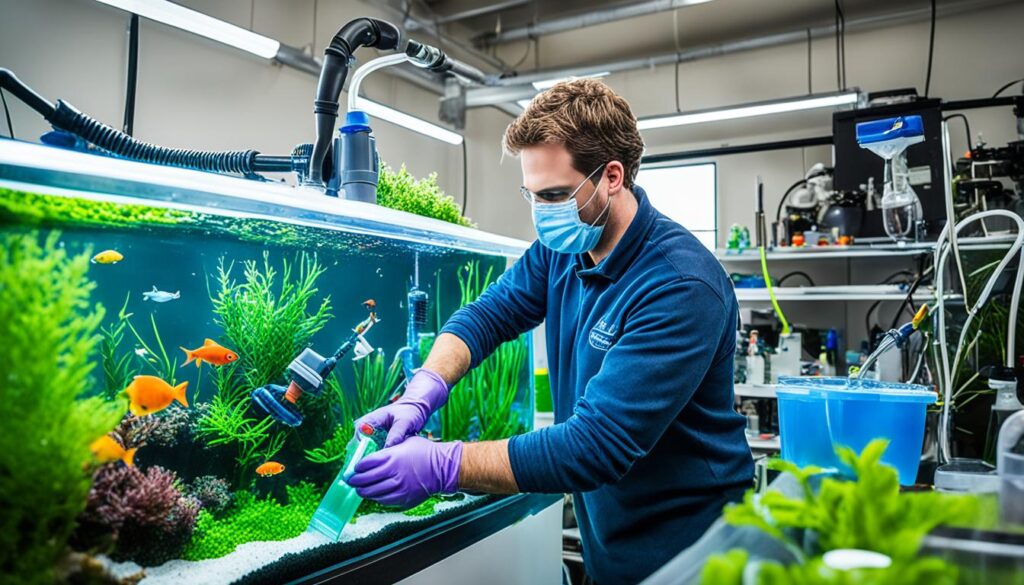
Remember, proper equipment maintenance and occasional upgrades are essential for the health and longevity of your freshwater aquarium. By taking care of your equipment, you can provide the best possible environment for your fish and enjoy a beautiful and thriving aquarium.
Conclusion
In conclusion, proper seasonal care is essential for maintaining a healthy freshwater aquarium. By following the tips outlined in this article, you can ensure that your aquatic ecosystem remains vibrant and thriving all year round.
Monitoring water parameters such as temperature, pH levels, and nutrient balance is crucial in creating the optimal environment for your fish and plants. Regular water testing and adjustments will help prevent issues such as algae blooms and poor fish health.
Additionally, adjusting feeding routines to suit the different seasons is important. Fish have different metabolic needs during winter compared to spring and summer. Understanding the seasonal feeding patterns of your fish species will help you provide the right amount and type of food.
Lastly, performing regular maintenance tasks and upgrading equipment when necessary will contribute to the long-term success of your aquarium. By keeping filters clean, checking pumps and heaters, and replacing worn-out equipment, you can ensure everything runs smoothly and efficiently.
In conclusion, by following these best practices for seasonal care, you can enjoy a vibrant and thriving freshwater aquarium for years to come. Remember to monitor water parameters, adjust feeding routines, and perform regular maintenance tasks to provide the best possible environment for your aquatic friends.
FAQ
What is seasonal care for freshwater aquariums?
Seasonal care for freshwater aquariums involves adjusting maintenance routines and conditions in response to the changing seasons to ensure the health and well-being of the fish and plants.
What are the seasonal changes to consider in aquarium maintenance?
Seasonal changes include temperature fluctuations, variations in lighting intensity and duration, changes in fish behavior and feeding patterns, and adjustments in nutrient levels and water parameters.
How do I care for my freshwater aquarium during the winter?
During winter, it’s important to keep the water temperature stable, provide adequate heating for the fish, adjust feeding schedules, and monitor water quality closely.
What steps should I take to maintain my freshwater aquarium in the summer?
In the summer, properly managing heat, providing shade, monitoring water parameters, adjusting lighting schedules, and increasing water changes are crucial for maintaining a healthy aquarium.
What are the necessary steps to care for my freshwater aquarium during autumn?
During autumn, it’s important to maintain stable water parameters, manage excess debris, prepare for changes in lighting and temperature, and perform necessary equipment maintenance tasks.
What tips can you provide for spring care of freshwater aquariums?
In spring, perform a thorough cleaning and refreshing of the tank, check water parameters, clean or replace filtration media, trim overgrown plants, and consider introducing new fish or live plants.
How important is proper lighting and temperature control in freshwater aquariums?
Proper lighting and temperature control are vital for the health and well-being of the fish and plants. Adjustments may be necessary based on the seasons and the specific needs of your aquatic inhabitants.
Why are water parameters and nutrient management essential for freshwater aquariums?
Maintaining proper water parameters and nutrient levels is crucial for the long-term health and success of your freshwater aquarium. Regular testing, water changes, and nutrient management help prevent issues such as algae blooms and fish health problems.
How should fish feeding routines be adjusted during different seasons?
Fish feeding routines should be adjusted based on seasonal changes. In winter, fish metabolism slows down, and they may require less food. During spring and summer, fish may have increased appetites due to higher activity levels.
Why is regular equipment maintenance and occasional upgrades important for freshwater aquariums?
Regular maintenance and occasional upgrades of aquarium equipment are essential for the long-term health and efficiency of your freshwater aquarium. Cleaning filters, checking pumps and heaters, and replacing worn-out equipment contribute to a healthy environment for your aquatic friends.
How do I ensure the best care for my freshwater aquarium throughout different seasons?
By following the tips outlined in this article, such as monitoring water parameters, adjusting feeding routines, and performing regular maintenance tasks, you can provide the best possible care and environment for your freshwater aquarium all year round.
